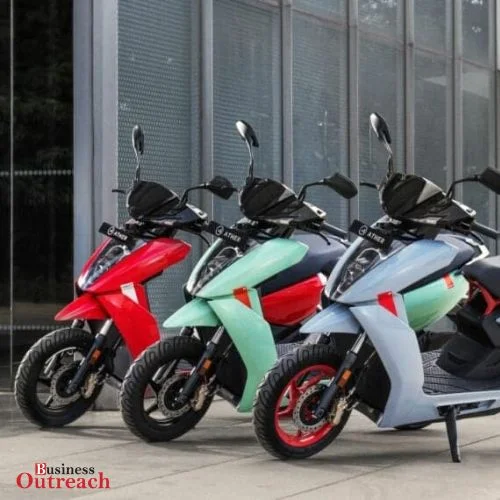| S.No. | Content |
| 1 | History of Taco Bell and Background |
| 2 | Winning Over the Masses with Mexican-Inspired Fare |
| 3 | What Taco Bell is Known for – Tacos, Burritos, and Specialties Galore |
| 4 | New Product Innovations and Marketing Campaigns |
| 5 | Taco Bell’s India Entry and Localization Strategy |
| 6 | Indian Menu Options That Cater to Local Tastes |
| 7 | Store Expansion Plans for Top Cities |
| 8 | Competition Scenario |
| 9 | The Future Outlook for Taco Bell in India |
| 10 | Conclusion |
Introduction
Source: Traffic Tail
From Glen Bell’s first 19-cent taco served from a California roadside stand in 1962, Taco Bell pioneered Mexican-inspired fast food and forever changed quick-service cuisine. This article explores the journey behind Taco Bell’s global empire serving over 2 billion customers annually. We discuss key milestones in its innovation of menu and marketing, as well as plans to win over India’s burgeoning youth markets through strategic localization and commitment to value.
History of Taco Bell and Background
Source: Turbologo
In the mid-20th century, a man named Glen Bell had a simple idea – make tacos accessible to Americans through quick-service restaurants. From this seed grew Taco Bell, the fast food pioneer that brought Mexican flavors mainstream across America and beyond.
Bell opened the first Taco Bell in 1962 in Downey, California. The roadside stand sold hard shell tacos for just 19 cents each – a novelty that soon attracted scores of fans. Taco Bell offered a completely new fast, affordable cuisine inspired by Mexican street vendors. Within one year, Bell built 8 Taco Bell restaurants. By 1967, Taco Bell went from a roadside stall to a nationwide chain boasting over 100 locations.
Winning Over the Masses with Mexican-Inspired Fare
While authentic tacos with simple fillings kicked off Taco Bell’s start, the brand knew limited menus wouldn’t sustain growth. Bell and early franchisees got creative – putting unique Americanized spins on Mexican cuisine like Bell’s original Bell Burger (later named the Bell Beefer). New items like enchiladas, burritos and nachos joined in.
Innovations changed the quick-service landscape, meeting American cravings for flavorful, meaty yet affordable meals on the go. Customizing orders “Taco Bell-style” by adding zesty elements like spicy peppers, guacamole, crunchy shells, or melty cheese brought excitement that homegrown fast food lacked.
Through the 60s and 70s, Taco Bell became the mecca for Mexican fast food. Locations featuring bright colors, Southwestern decor, and playful puns evoked the vibrant, laidback essence of California beach towns. With prices under 75 cents per item, Taco Bell made unique border cuisine every day affordable – especially valued during periods like the 70s oil crisis squeezing American wallets.
What Taco Bell is Known for – Tacos, Burritos and Specialties Galore
Source: Taco Bell
While tacos put Taco Bell on the map, its expansive menu today has something for everyone. Burritos stuffed with flavorful fixings like fiery steak, cheesy rice, or classic beans and beef are top sellers. Quesadillas loaded with melty cheese and bold spices like Chipotle Chicken or Steak satisfyingly bridge meal and snack.
For veggie fans, options like black bean Crunchwraps Supreme, 7-Layer Burritos, or customizable Fresco Style orders make Taco Bell a lead mainstream Mexican chain. Signature seasoned rice, chips, and creamy dips like guacamole or queso give sides south-of-the-border zing. Wash it all down with Baja Blast frozen drinks in funky flavors like watermelon or strawberry.
Then there are novel mashups showing Taco Bell’s willingness to blur culinary borders without losing the funky essence loyalists love. Nacho fries, quesadilla tacos, triple melt breakfast burritos – these genre-busters attract new patrons while still childhood favorites. From traditional tacos that started it all to experimental items harnessing global inspiration, Taco Bell’s menu keeps expanding right alongside changing tastes.
New Product Innovations and Marketing Campaigns
Source: Forbes
Later run by PepsiCo and Yum Brands, Taco Bell continued trailblazing in the 80s and 90s even amid fierce competition. It premiered novelties like salsa bars and value meal deals while rivals stagnated on boring burgers. One pivotal product was the 12-ingredient Nachos Supreme launched in 1983. Still popular today, the messy yet tasty dish embodied Taco Bell’s Declaration of Indulgence encouraging affordable splurging.
The brand also connected with younger generations through buzzy film tie-ins and irreverent advertising with soon-to-be celebs like Gidget the Chihuahua. Outrageous yet sharable stunts like 10-story neon bell towers shouting “FREE TACO!” made Taco Bell synonymous with crazy creativity. These lively campaigns stylistically separated Taco Bell from stodgier fast food giants – winning Gen X and millennial devotion for decades to come.
Taco Bell’s India Entry and Localization Strategy
Source: Global Prime News
After cementing dominance in America, Taco Bell is bringing modo mas sabor (“more flavor”) worldwide – seeing India as its next major conquest. Though new on the subcontinent, early efforts show Taco Bell replicating its localization strategy that worked magic in Asia.
Indian outlets in urban hubs like Delhi adapt Taco Bell signatures to suit desi palates. Content like queso chicken nachos, seasoned curly fries, and spicy potato Rustic Wraps satisfy cravings for flavorful vegetarian fare. Chilli Paneer Tacos, Gordita Crunches, veggie CrunchWraps, and other mashups fuse border spices with regional tastes. Taco Bell India even has a lassi-inspired Mountain Dew freeze!
With 70% of Indians under 35, hip brand persona and modern stores full of music, bright colors, and open kitchens resonate with younger crowds. Meal deals priced modestly for India keep Taco Bell affordable yet special – perfect for Gen Z hangs.
Indian Menu Options That Cater to Local Tastes
Source: Restaurant Media
As a country with predominantly Hindu and Muslim populations, vegetarian fare is paramount for Taco Bell India. Meatless tacos, burritos, and nachos starring beans, potatoes, and regional veggies cater to dietary preferences. Additionally, Taco Bell segregates vegetarian prep areas in most kitchens – a commitment topping local standards.
To further Indianize core items, signature options get revamped with familiar spices. Bestseller sides like fries or nachos get sprinkled with chaat masala, adding zingy sweet-and-sour pops. Wraps and tacos pack paneer with cilantro-mint chutney instead of cheese and salsa for creamy, herby textures. Quesadillas can be stuffed with spicy, tender chicken tikka baked between toasted corn tortillas. And special Chilli Paneer Tacos with crisp peppers, smooth cheese, and fiery sauce blend border zest with local comfort.
Such creative local options combined with customizable ordering make Taco Bell uniquely positioned to be many Indians’ first foray into Mexican flavors. Maintaining signature crunch and seasonings while tweaking proteins and producing regionally helps expand the accessibility of this cuisine previously less visible outside metros.
Store Expansion Plans for Top Cities
Source: The Wall Street Journal
Currently, Taco Bell India operates just 50-odd locations in metros Mumbai, Delhi, Hyderabad, Bangalore, and Chennai. But huge expansion plans aim for 600 outlets spanning 75 cities by 2026.
Taco Bell leans into homeland advantages as one of few Mexican chains in India – localizing faster by acquiring homegrown brands. Potential acquisitions like Wow Momos would give Taco Bell ready infrastructure plus added brand recognition. Cloud kitchens and off-premise partnerships will accelerate growth too while boosting order volumes and sales.
Taco Bell also keeps menus, stores, and marketing flexible from region to region. Local flavors, languages, and brand ambassadors help stores penetrate deeper nationally. Though localization is complex across India’s diversity, Taco Bell can win state by state through replication strategies perfected abroad.
Continued Growth
Mexican-inspired quick-service chain Taco Bell operated a total of 8,218 restaurants in 32 different countries worldwide in 2022. This number rose from 7,791 the previous year. The number of Taco Bell restaurants increased each year since 2010. According to Zippia, Taco Bell’s revenue was $2 billion in 2022.
Competition Scenario
Source: Strategic Management Insight
India’s rapidly growing $23 billion quick-service restaurant industry promises huge rewards for chains that gain loyalty. With rising incomes, urbanization, and an appetite for modern dining experiences amongst India’s youth, QSR markets will only expand.
But snagging market share requires outperforming major quick service players. Dominos India rules delivery while home legend Haldiram’s and international brands like Burger King lure diners. Retaining customers with other Mexican options like Chipotle or local cuisine is another threat.
Staying cost-competitive is also critical for Taco Bell. Most young Indian consumers don’t have the disposable incomes American counterparts enjoyed when Taco Bell entered the scene decades ago. Taco Bell must balance premium positioning with value if it wants mass appeal.
Fortunately, Taco Bell knows how to win on native turf – its tried and tested global framework bodes well for tackling complex but promising markets like India.
The Future Outlook for Taco Bell in India
Source: BrandEquity
Ever innovating menu and marketing for over 60 years, Taco Bell, brought Mexican flavors mainstream across America through affordable indulgence. Now the brand sets its sights on winning over India’s youth and middle class through smart localization strategies.
If retaining its signature funky brand image while adapting operations to suit hyperlocal tastes, Taco Bell can repeat that success story across Indian states just like it has for Asian regions. By continuing fearless experimentation with flavors, formats, and customer experience – while making Mexican-inspired fare accessible for the masses – Taco Bell’s next 60 years look just as sabroso both stateside and across new global territories.
Though nascent in India, Taco Bell can leverage its strong global framework for customizing operations to local preferences – just like it has across Asia. However, succeeding nationally means mastering complex diversity from ingredients to flavors faster than formidable domestic chains. If Taco Bell sticks to its playbook of experimentation and affordability, India’s exploding youth markets promise huge rewards. Localizing with authenticity and urgency is paramount to becoming top-of-mind for digitally-savvy Indian consumers with endless quick service options just one click away.
Conclusion
As Taco Bell sets its sights on winning over India’s booming youth and middle class, persisting in strategic localization and affordability will be key to mirroring its American glory story. By continuing to experiment boldly with flavors, formats, and access while retaining its funky essence, Taco Bell can achieve mass appeal across India’s diversity. Though rivals are fierce, Taco Bell’s proven framework for customizing globally promises that its next 60 years will be as flavorfully disruptive across India as the last.














